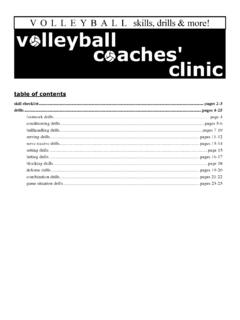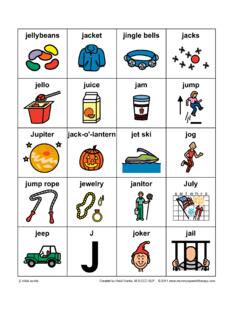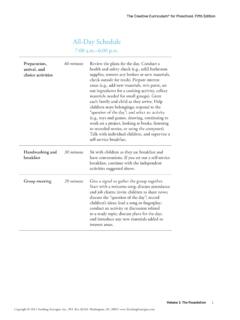Transcription of The School as a Community of Engaged Learners
1 The School as a Community of Engaged Learners Penelope Eckert Shelley Goldman Etienne Wenger This essay is the result of many discussions at IRL about School restructuring. Our research on the social nature of learning has led us to a very particular perspective on the principles that must dictate the structure of a learning Community . The School must provide not only the very best intellectual resources; it must also provide the social affordances that best support a meaningful Community for its participants both teachers and students. Learning in School Learning is a basic and ubiquitous human activity.
2 Society is based on learning, communities are held together by learning, and people construct identities through learning. Yet learning becomes problematic in School , where it is assumed that some people will learn and others will not, and where it is assumed that learning is something that kids will only do under coercion. Kids' engagement in non- School activities is viewed as a distraction from learning, but the depth of learning that takes place among kids involved in age-specific social activities is unequalled in the classroom. Unlike much of what is taught in School , the knowledge gained in collecting and trading baseball cards, stamps, or records, becoming a Deadhead; playing double dutch, Dungeons and Dragons, video games, high performance Monopoly; playing in a garage band, or working on cars, tends to stay with people for the rest of their lives.
3 Adults tend to view friendships, games, romance, collections, popular music, as attractive nuisances that prevent learning. But if the learning energy that goes into these activities went into math or social studies, we would have a nation of academic geniuses. In fact, learning becomes problematic in School to the extent that the School focuses on learning as an endeavor in itself, rather than as a means to building social relations and engaging in meaningful activity. No amount of change in schools will produce significant results unless the nature of School as a social entity is taken seriously.
4 No amount of clever delivery of subject matter will capture the imaginations and energies of students who feel that their opportunities for social development lie elsewhere. While many teachers know better, the organization of our schools currently embodies the belief that kids' social ties and activities are incompatible with learning. But individuals learn in the interests of participation in communities that matter to them. They learn in order to know how to be productive in the Community , and to gain access to valued forms of Community participation. Their reward is in seeing their contribution, knowing that others recognize their contribution, and forging an ever changing sense of themselves.
5 We take this as given among adults, whose work is commonly integrated with their social lives. Scientists mix social and scientific interaction, and forge their identities and connections around their work, their knowledge and their contributions to the scientific Community . Yet kids in School are currently expected to function differently to learn in isolation from the social The School as a Community of Engaged Learners 2. ties that bind them. In adult scientific communities, as in kids' jump rope groups and garage bands, activity and social relations are closely intertwined.
6 It is in this sense that we speak of communities of practice. United by a common enterprise, people come to develop and share ways of doing things, ways of talking, beliefs, values - in short, practices - as a function of their joint involvement in mutual activity. Social relations form around the activities, the activities form around relationships, and particular kinds of knowledge and expertise become part of individuals' identities and places in the Community . Most important, learning becomes the means by which people gain membership, and participate in, these communities.
7 To benefit from the tremendous learning energy that comes with social membership, schools need to provide the opportunity for students to form communities of practice around subject matter. This does not mean that schools should build their curriculum around rock n roll or video games. It most decidedly does not mean that students need to be cajolled or entertained into learning. These activities come into conflict with School precisely because for many students, School offers no alternative no opportunity to build meaningful lives around School work no opportunity to express themselves through participation in School learning.
8 If kids are to have opportunities for full participation in School , the School must offer communities of practice with the same drawing power as the students' other communities the same potential for participation that is offered in families, neighborhoods, communities, workplaces, clubs and so on. This drawing power depends, among other things, on possibilities for meaningful participation, and on compatibility with participation in communities of practice outside of School . If students are to take what they learn in School into the rest of their lives, they must be able to bring what they learn elsewhere into School .
9 Thus the communities that students form in School cannot be isolated from the many other communities in which they participate; the School is a viable Community for students only to the extent that it supports their participation in other communities as well. A School must offer learning as a key to the world as a key to an infinite number of ways of being and participating in the world. It must build on diversity, and create diversity. We do not want our students to come out of School with uniform knowledge; we want students leaving School to be not only knowledgeable, but self-directed, creative, and adaptable.
10 Nor do students come into School with uniform knowledge; they come to School with different The School as a Community of Engaged Learners 3. experience, different knowledge, different tastes, different ways of speaking, doing, and thinking. And they seek, in School and out, the means to expand, explore and express who they are and how they fit into the world. For each student, the process must be different, and that difference will be part of who the student is and part of the student's unique contribution to his or her various communities. Currently, the only legitimate opportunity for developing identities around learning in the classroom is along a linear scale of "better" or "worse" student, based on the standardized performance of standardized tasks.


















